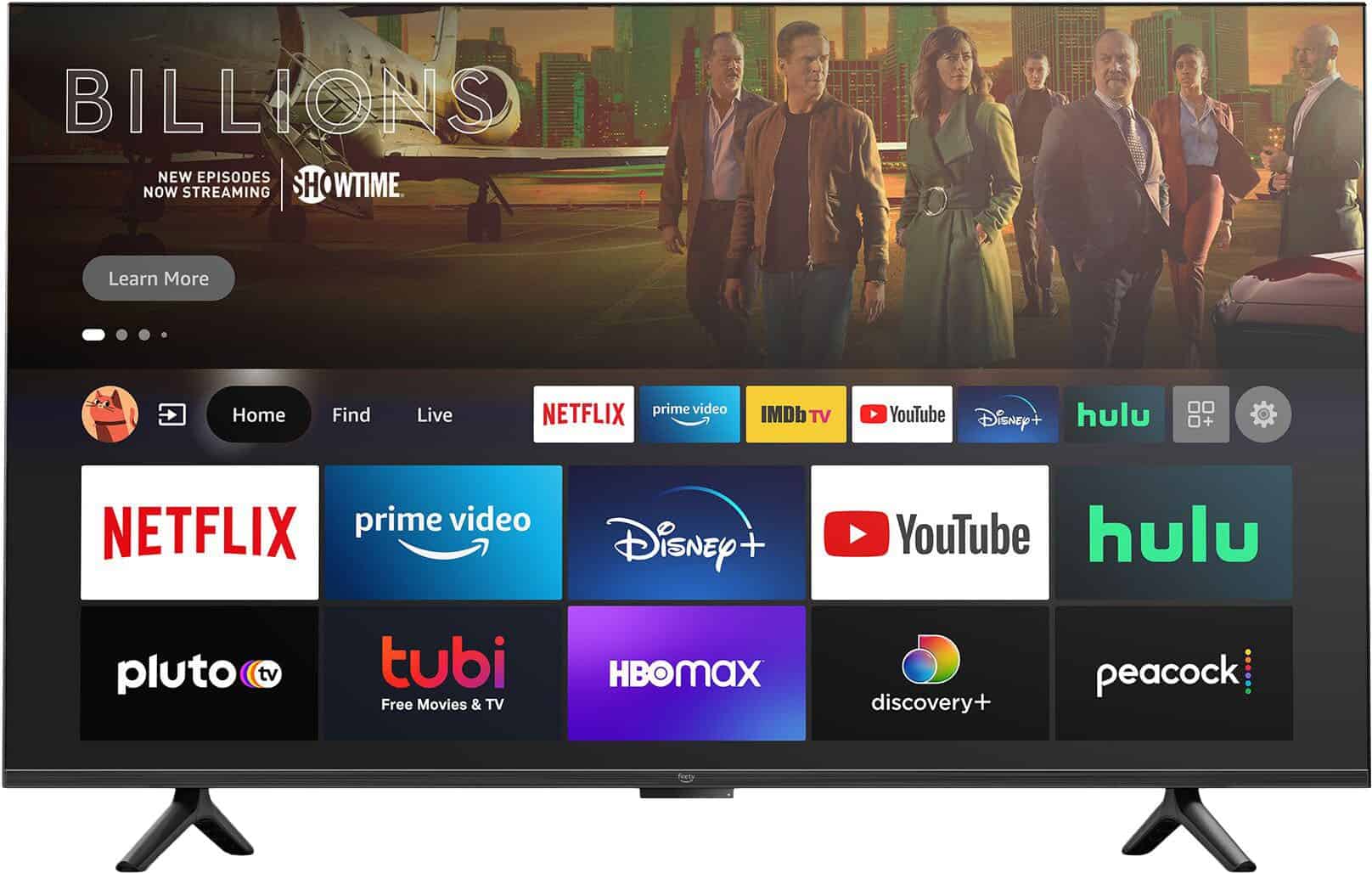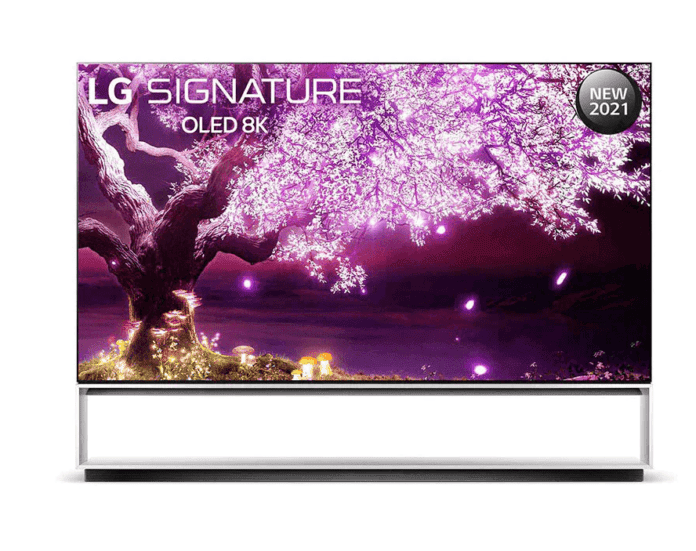The television market is a very competitive market with products from dozens of brands promoting various technologies that promise to deliver a high quality viewing experience. For this reason buying a TV may be a hectic task at times. This page is a Buy TV guide that will highlight some of the most important considerations in buying a TV whether LED, OLED, QLED, CRT, Plasma, LCD, or 3D television.
Where to Buy TV
Jumia.com.ngfrom ₦35,000.00 Buy Now

Here are some tips to help you in choosing the right TV to buy:
Where will the TV be Mounted?
When you decide to buy a television you need to remember the purpose of the TV. This is somewhat connected to where it will be mounted. A television to be mounted in the bedroom will usually be smaller than the TV for the living room.
The main television in the living room is usually larger than all other TVs in the house. This is most likely to be a widescreen television.
The TV in the living room should also be fully featured to satisfy the needs of the whole family.
The size of the television is also determined by the anticipated viewing distance. You should buy a large TV, if you intend to view from a longer distance. A large living room will be better with a large screen TV.
A small television is okay for the kitchen or a small room. You may also buy a refrigerator with a built-in TV for your kitchen.
Buy TV at these Stores
Jumia.com.ngfrom ₦25,000.00 Buy Now
What Display Technology?
Today there are three popular screen display technologies to choose from. These are the Light Emitting Diode (LED), Organic LED (OLED) and the Quantum dot LED (QLED). Each of these technologies have their merits and demerits.
Note that 3D TVs are not really a display technology, since 3D TV can come in any display technology. However, because 3D TVs failed to catch-on with consumers, the technology is nolonger incorporated in latest TV models.
Traditional Cathode Ray Tube (CRT) TV are still available in Nigeria, but are now very rare and only available from smaller TV brands. Flat panel LED TV have taken over the market because of their slim and sleek design.
If room space is important (ie. You have limited space) then you should buy the flat-panel LED, QLED, or OLED TV models. These models are ultra slim and makes the best of limited space. Some of these TVs are less than 3 cm thin.
Flat panel TVs are more fashionable these days. They are stylish and are now growing in popularity. The LG R9 and LG RX rollable TV models are great examples of how stylish TVs have become.
So, if you do not want to come across as one from the stone ages, you should aim for a flat-panel TV e.g. LED, OLED, or QLED TV as your next television.
On the other hand CRT rear projection technology are cheaper, but are obsolete, and we don’t advice you to go that way. Plasma TVs are obsolete and CCFL-LCD TVs getting there gradually and are very scarce as LED TVs now dominate the market.
Flat panel LED TVs have a wider viewing angle than Plasma TV. Viewing angle is the angle at which a TV can be viewed without a considerable reduction in the picture quality. The image from an LCD or plasma TV tends to lose its quality if you view from the side just like mobile phone displays.
However, LED TV, OLED TV and QLED TV offer better picture quality and clarity. This is because they can display a lot more pixels with better contrast.
Before you buy an LED, LCD, OLED or Plasma TV there are a few things you must know.
CCFL-LCD TVs (sometimes simply just called LCD TVs) and LED TVs are both essentially the same except for the lighting element, which actually makes a big difference in picture quality. LCD TVs use CCFL (Cold Cathode Fluorescent Lamp) positioned at the back or side for lighting while LED TVs use LEDs for lighting.
This results in LED TVs being more energy efficient with better contrast ratio. Overall, Plasma TVs were said to offer superior viewing experience, but lost out to LED TVs, because the latter are more versatile.
Panasonic stopped production of Plasma TVs in 2013, while Samsung closed production in November 2014. LG also ended production in 2014/2015, putting the final nail in the coffin.
Plasma Display Panel (PDP) had limited to large screen sizes. This was partly why LED TVs won.
For example you are not likely to find a 32-inch plasma TV in the market, except you look very hard. Plasma TV screen sizes range from 42-inch to up to 70-inch. However, LG electronics launched her 32-inch plasma TV in Nigeria back then. This according to LG was the first 32-inch Plasma TV in Nigeria and the world at large.
On the other hand, LED TV are available in all sizes from as little as 3-inches to over 100-inches.
OLED TVs are the latest technology in TV display, they use organic LEDs, which emits light naturally, eliminating the need for the lighting element. This results in more energy efficiency, deeper blacks, better contrast ratio, and sleek TV design that can be flexible, flat, or curved.
Plasma TV had a better viewing angle than LCD and LED TV, while OLED, LED and LCD TVs offer brighter displays. OLED TV and Plasma TV offers deeper black levels and higher contrast ratios followed by LED TV, then LCD. OLED TV and LED TV are the most energy efficient followed by LCD, then Plasma.
QLED is a proprietary display technology from Samsung to compete with OLED TVs mostly from LG. It is just an upgrade to existing LED technology.
OLED vs QLED
If you are looking for a top of the line premium TV, OLED TVs and QLED TVs are perhaps the only choice available to you.
While OLED TV is championed by LG, Samsung is the major promoter and perhaps the only producer of QLED TVs.
OLED TVs are a completely new technology that uses self-emitting diode to create great quality pictures. For an OLED, each pixel emits its own light leading to ultrahigh contrast and deeper blacks.
QLED TVs are just an upgrade to the LED display technology. Samsung simply placed a Quantum dot colour filter in front of the back light, which somehow creates better picture quality pictures than traditional LED TVs.
Compared, OLED offer superior contrast, deeper blacks, and much faster refresh rates than QLED. On the other hand, QLED is brighter and available in more screen options than QLED. They are also more affordable.
However, if you are looking for a sleek TV, OLED TVs are better suited for you. Because, they emit their own light, there is no need for any backlight mechanism, making them superslim.
This is why LG boasts of rollable TV.
Compare Prices
What is the Resolution? HD, Full HD or Ultra HD (4K / 8K)
Televisions display images on the screen as a series of lines. The more lines used to display an image the better its resolution, clarity or definition. Traditional Analogue television displays image in 480 interlaced (480i) lines. Digital TV on the other hand displays images in 720 progressive (720p) lines.
A TV that displays images in 720 progressive lines (720p HD) is called an HD TV. A full HD TV uses 1080 progressive lines and 1920 x 1080 resolution to display more brilliant pictures.
At the very least, if you want to buy a TV of above 32-inches make sure it is full HD for the best viewing experience. TVs with 720p HD may be okay at 32-inches or lower.
If you want to buy a 32-inches TV, your first choice should be a full HD TV, but if the price is too high for your budget, you can manage a model with 720p HD.
Ultra HD TVs offers at least four times the resolution of full HD TVs with 3840 x 2160 resolution (2160p). This base ultra HD resolution is also referred to as 4K TV.
A higher definition ultra HD TV offers 16 times more resolution as a full HD TV with 7680 x 4320 (4320p) and is called an 8K TV.
The major difference between progressive scan and interlaced scan is that interlaced lines use alternating scans to display images. In effect two alternating lines represent one line of image.
This means that in the actual sense a 480i has just about 240 lines. A progressive scan TV scans images consecutively and hence produces a much improved picture quality.
Also available is the enhanced definition television (EDTV). This is a minimum requirement for your TV if you have a progressive scan DVD. EDTV scan images in 480 progressive scan (480p) lines. They offer better quality pictures than 480i.
Will you want Streaming Content or Web Chat?
Some TVs offer built-in Wi-Fi, which enables you stream content online. If you want such features, buy a Smart TV. Smart TVs are more or less like your smartphone, they support third party streaming apps like YouTube, Netflix, and Hulu.
With these TVs you can stream Movies and YouTube Videos directly on your TV from the Internet. Note that just because a TV has Wi-Fi, does not make it a Smart TV. It is its ability to run third party apps that is key.
Some smart TV come with built-in camera which enables you video chat on services like Skype. Even if your smart TV lacks a built-in camera, you can snap-in a TV camera in one of the USB ports on your Smart TV to engage in video chat.
Do you need Screen Mirroring?
Screen mirroring enable you cast what is on a screen to another screen. For example, you will be able to cast what you are viewing on your phone or laptop to your TV for a larger audience to see.
Mirroring technology are available on some smart TVs.
What about Voice & Gesture Control
Some Smart TVs offer voice control and gesture control. These features are mostly experimental and do not usually work well initially but will get better.
The beauty of Smart TVs is that new features can be added in the software via software updates. With voice control, you can change channel and alter the volume just by giving it a required command.
You can also connect to other smart home gadgets like Amazon Echo or Google Home.
Gesture control involves using body movement to control your TV. For example, waving your hand up could mean, increase volume, while waving down could mean reduce volume.
What Aspect Ratio
You should buy a buy with an aspect ratio of 16:9 for your living room. The aspect ratio of a television is a ratio of the screen breadth to the screen height. Television with 16:9 aspect ratio are said to be widescreen.
One way to identify whether a television is widescreen is that it looks more rectangular in shape.
If your TV screen looks more like a square then its aspect ratio is 4:3. Your main television should be widescreen. If you want to use a TV as part of your home theatre, you should buy a widescreen TV.
Widescreen televisions are designed to mimic human vision. They offer a better viewing experience.
Buy TV at these Stores
Jumia.com.ngfrom ₦25,000.00 Buy Now
Digital or Analogue
This is not an important consideration anymore, since you do not really have any choice in this area, since most current TVs come with standard digital and Analogue support. However, we leave it here because it was an important consideration when we first wrote this buy guide in 2008.
You should buy a television with the latest digital capabilities. Most countries now have deadlines for switching off analogue terrestrial broadcasts. The International Telecommunication Union (ITU) has set a deadline of 2015 for the switch off of all analogue terrestrial broadcasts. In Nigeria the deadline was 2012, but like everything deadline we have set ‘since Adam’, we did not meet that deadline.
If you buy a TV with full digital capability you may be able to receive digital broadcasts whenever signals become available. In some countries you do not have the luxury of choice as all TVs are shipped with full digital capability.
Even in countries where digital broadcast are not available buying a TV with full digital capability comes with some merits. With full digital capability you will experience considerable improvement in the clarity and quality of your movies.
Most high definition TVs come digital ready. However, you may need a digital set-top from services like DSTV, GOTV, Startimes, and Free TV if you want to receive digital TV signals in Nigeria.
Inputs found in digital/HD TV include DVI, HDMI, PC and DA.
Power Requirement
You should ensure that the TV you buy conform to local electricity requirement. In the United States the voltage power supply rating is 110v-115v, 60Hz while 210v-250v, 50Hz is used in countries like Nigeria and the United Kingdom.
However, some modern television comes with internal adapters that can adapt to a much wider voltage requirement. For example there are TVs that are rated as 100v-250v, 50Hz/60Hz. This implies that such a TV can operate in US, UK and Nigeria without any problem.
You need to also buy an adapter to enable you connect all the other gadgets like DVD player and PVR, digital satellite decoder.
TV Brands
There are dozens of television manufacturers. Some popular TV brands with good reputation include Samsung, LG, Sony, Sharp, Panasonic, and, so on. Some other brands to consider include Heir Thermocool (UKA), Polystar, HiSense, Syinix, Infinix, Bruhm, Skanfrost, and Skyworth.
Look for a brand with a good reputation in your area.
TV Prices
At this point you have enough information to research on the price of your selected TV. The Price of a TV varies across brands. Prices of TV also vary with number of features and type of technology.
For example, a 42-inch LCD TV will cost about twice the price of a 42-inch plasma television. LG is also generally cheaper than Samsung for example. Brands like HiSense generally offer cheaper TVs.
Visit our retail partners like Konga and Jumia to view prices of different brands and TV technologies. If you are in Nigeria you can visit our authorised electronics dealer list, you can call any dealer close to you for price information. You may also find our TV price list helpful.
You can also research prices further on the internet. One place to start is the Konga Nigeria online store. At Jumia and other online stores in Nigeria, you will find information on 3D TV, LCD and Plasma TVs from different brands. You can read feature information and compare prices of lots of TV brands. You can also read product reviews written by visitors who have recently used the exact model of television you intend to buy.
Television Financing
Now that you know the TV you want to buy and the price you need to determine how to finance the purchase.
You can either finance the purchase through your savings or through a loan or debt. Financing your purchase with a loan is more flexible and helps you to finance purchase without stress. However, you will pay interest on the loan; this will make the TV to cost slightly more.
Consumer financing is very popular in developed countries like US and UK, but is still a relatively new purchase option in Nigeria and other developing countries.
Visit your bank or retail shop to inquire on consumer credit options.
Important Notes
Purchase your TV and all other electronic products from authorised dealer shops. If you buy from an authorised dealer you get at least a one year warranty on the any purchase. They also offer excellent after sales services.
Note however, that warranties are limited and include some terms and conditions.







